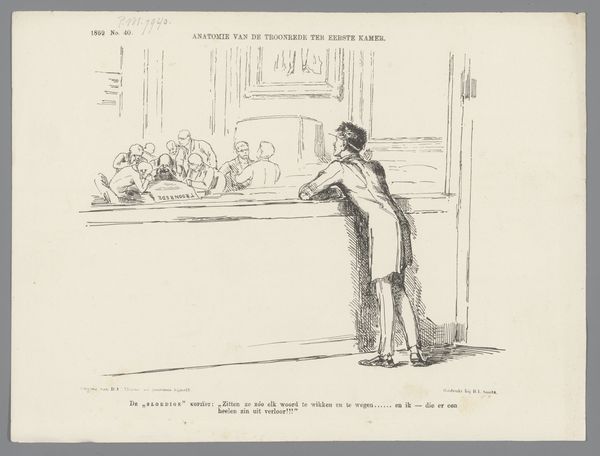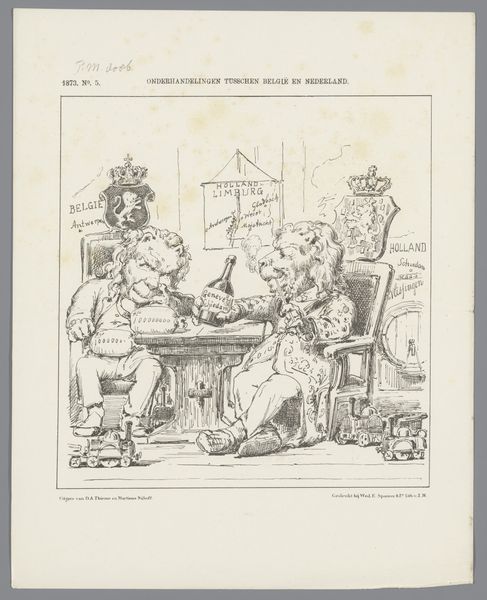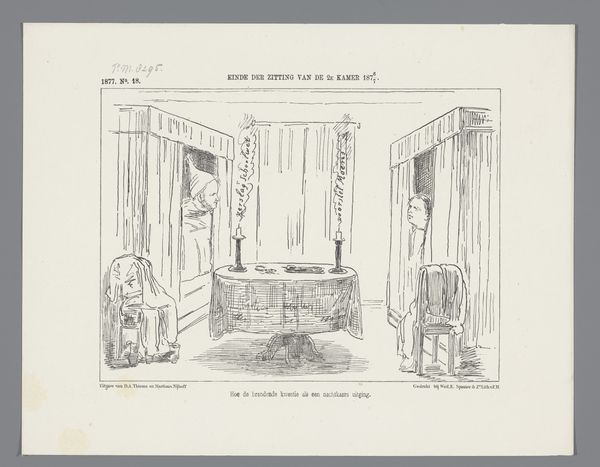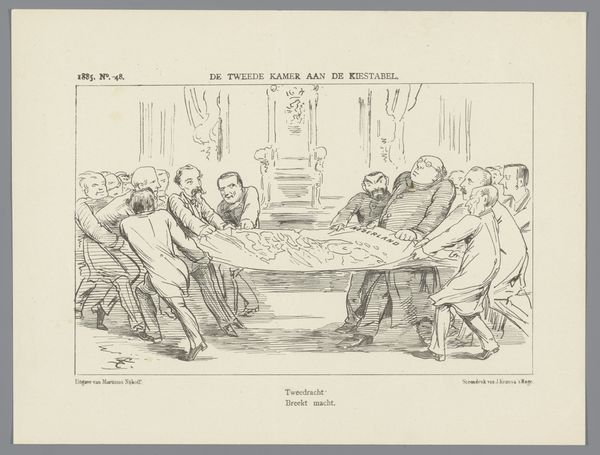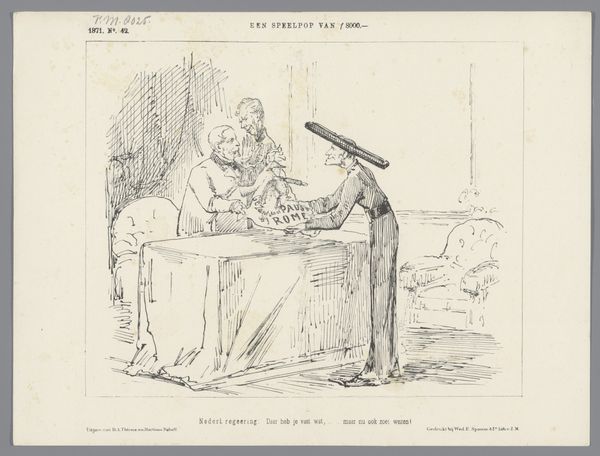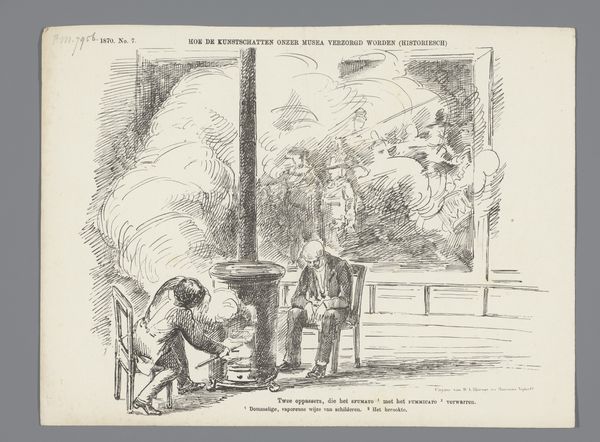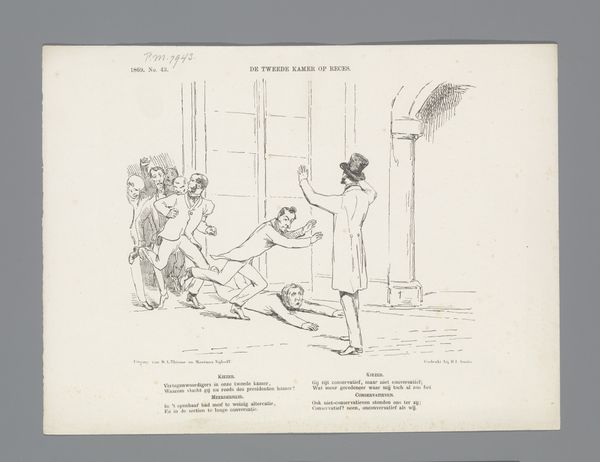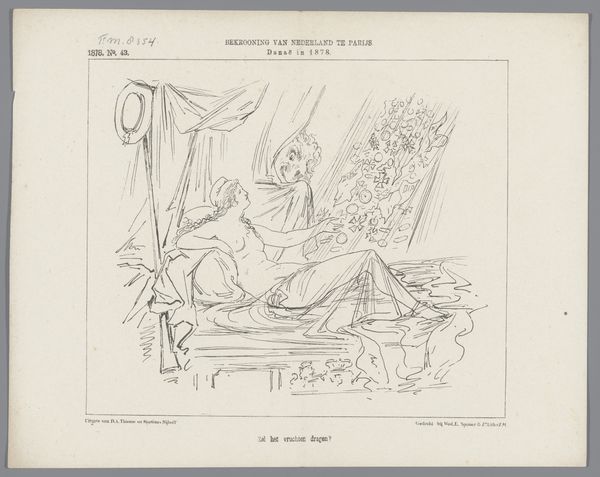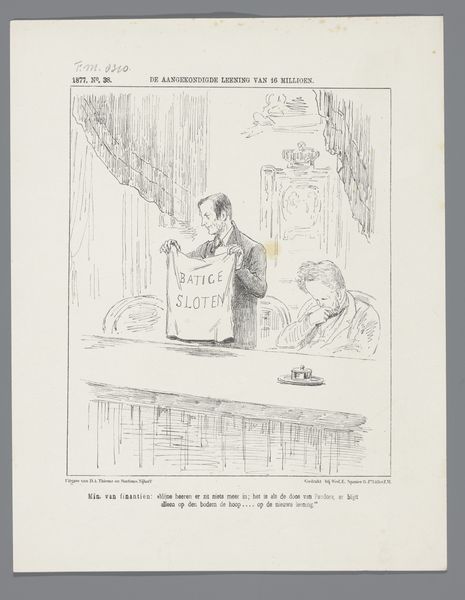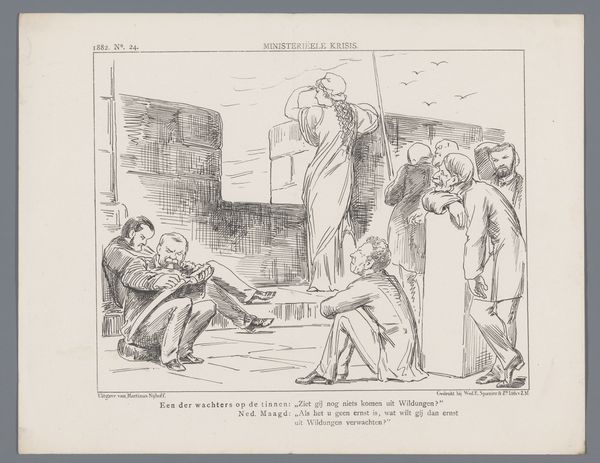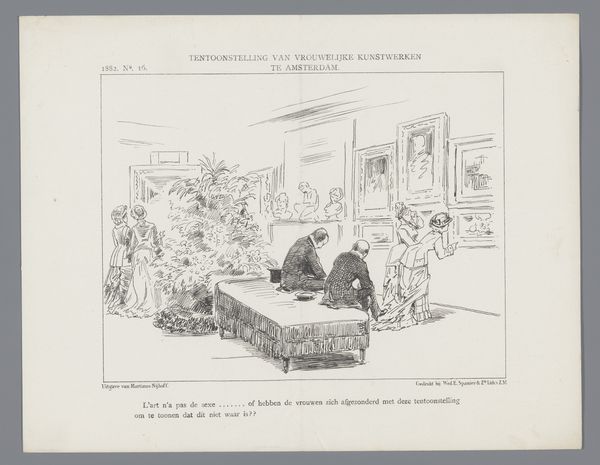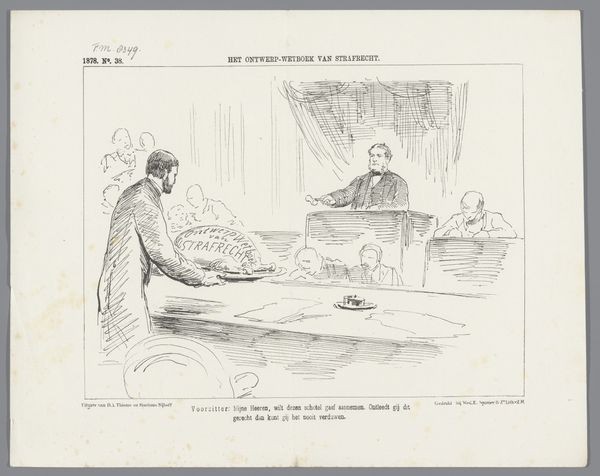
Spotprent over de ontoegankelijkheid van het onderwerp van de rechterlijke organisatie, 1873 1873
0:00
0:00
drawing, print
#
drawing
#
comic strip sketch
#
aged paper
#
pale palette
# print
#
caricature
#
old engraving style
#
sketch book
#
personal sketchbook
#
sketchwork
#
sketchbook drawing
#
genre-painting
#
storyboard and sketchbook work
#
sketchbook art
#
realism
Dimensions: height 215 mm, width 275 mm
Copyright: Rijks Museum: Open Domain
Curator: This satirical print, created in 1873 by Johan Michaël Schmidt Crans, is titled "Spotprent over de ontoegankelijkheid van het onderwerp van de rechterlijke organisatie." It's a detailed drawing, almost a storyboard-like composition, using lines to convey a scene of disinterest and perhaps even chaos. Editor: My first impression is of utter apathy. The figures seem slumped, asleep, or simply not engaged. The lines are chaotic, mirroring the disarray they depict, there is a powerful lack of centralized focus. Curator: Precisely. Crans utilizes line weight and hatching to direct the eye. Notice the stark contrast between the busy foreground and the almost blurred figures in the background, creating a depth that highlights the immediate inaction. Editor: I find the placement of figures symbolic. The reclining man in the foreground, literally lying prostrate, becomes a symbol of complete surrender or disengagement from civic duty. Curator: Absolutely. The visual language emphasizes the thematic concerns. The composition is quite deliberate. The drawing is executed in great detail on aged paper using an engraving technique, further enriching its historical and visual density. This technique creates precise, detailed images through intricate carving. Editor: And this precise rendering enhances the critical bite. Each slumped posture, each averted gaze becomes an indictment of political negligence, embodying the weight of inaction and apathy which the public must have felt towards judicial organization. There are layers of symbolism present to reveal the inner states and wider themes of governance. Curator: Yes, and by presenting it as a caricature, Crans amplifies the absurdity, driving home the message. This fusion of technique and symbolic depiction certainly intensifies the narrative potency of the work. Editor: It’s interesting to consider how effective such imagery would be in sparking dialogue and reform, in 1873. This combination of political commentary and visual satire continues to offer relevance and meaning. Curator: A relevant artwork for scholars and enthusiasts alike! Thank you. Editor: Thank you!
Comments
No comments
Be the first to comment and join the conversation on the ultimate creative platform.
